- Home
- Quizzes
- My Quiz Activity
- Newsletters
- Sports Betting
- MY FAVORITES
- Add Sports/Teams
- SPORTS
-
NFL
- NFL Home
- Arizona Cardinals
- Atlanta Falcons
- Baltimore Ravens
- Buffalo Bills
- Carolina Panthers
- Chicago Bears
- Cincinnati Bengals
- Cleveland Browns
- Dallas Cowboys
- Denver Broncos
- Detroit Lions
- Green Bay Packers
- Houston Texans
- Indianapolis Colts
- Jacksonville Jaguars
- Kansas City Chiefs
- Las Vegas Raiders
- Los Angeles Chargers
- Los Angeles Rams
- Miami Dolphins
- Minnesota Vikings
- New England Patriots
- New Orleans Saints
- New York Jets
- New York Giants
- Philadelphia Eagles
- Pittsburgh Steelers
- San Francisco 49ers
- Seattle Seahawks
- Tampa Bay Buccaneers
- Tennessee Titans
- Washington Commanders
-
MLB
- MLB Home
- Arizona Diamondbacks
- Atlanta Braves
- Baltimore Orioles
- Boston Red Sox
- Chicago White Sox
- Chicago Cubs
- Cincinnati Reds
- Cleveland Guardians
- Colorado Rockies
- Detroit Tigers
- Houston Astros
- Kansas City Royals
- Los Angeles Angels
- Los Angeles Dodgers
- Miami Marlins
- Milwaukee Brewers
- Minnesota Twins
- New York Yankees
- New York Mets
- Oakland Athletics
- Philadelphia Phillies
- Pittsburgh Pirates
- San Diego Padres
- San Francisco Giants
- Seattle Mariners
- St. Louis Cardinals
- Tampa Bay Rays
- Texas Rangers
- Toronto Blue Jays
- Washington Nationals
-
NBA
- NBA Home
- Atlanta Hawks
- Boston Celtics
- Brooklyn Nets
- Charlotte Hornets
- Chicago Bulls
- Cleveland Cavaliers
- Dallas Mavericks
- Denver Nuggets
- Detroit Pistons
- Golden State Warriors
- Houston Rockets
- Indiana Pacers
- Los Angeles Clippers
- Los Angeles Lakers
- Memphis Grizzlies
- Miami Heat
- Milwaukee Bucks
- Minnesota Timberwolves
- New Orleans Pelicans
- New York Knicks
- Oklahoma City Thunder
- Orlando Magic
- Philadelphia 76ers
- Phoenix Suns
- Portland Trail Blazers
- Sacramento Kings
- San Antonio Spurs
- Toronto Raptors
- Utah Jazz
- Washington Wizards
-
NHL
- NHL Home
- Anaheim Ducks
- Arizona Coyotes
- Boston Bruins
- Buffalo Sabres
- Calgary Flames
- Carolina Hurricanes
- Chicago Blackhawks
- Colorado Avalanche
- Columbus Blue Jackets
- Dallas Stars
- Detroit Red Wings
- Edmonton Oilers
- Florida Panthers
- Los Angeles Kings
- Minnesota Wild
- Montreal Canadiens
- Nashville Predators
- New Jersey Devils
- New York Islanders
- New York Rangers
- Ottawa Senators
- Philadelphia Flyers
- Pittsburgh Penguins
- San Jose Sharks
- Seattle Kraken
- St. Louis Blues
- Tampa Bay Lightning
- Toronto Maple Leafs
- Vancouver Canucks
- Vegas Golden Knights
- Washington Capitals
- Winnipeg Jets
- NCAAF
- NCAAM
- Boxing
- Entertainment
- Lifestyle
- Golf
- MMA
- Soccer
- Tennis
- Wrestling
- More Sports
- RESOURCES
- My Account
- YB on Facebook
- YB on Twitter
- YB on Flipboard
- Contact Us
- Privacy Policy
- Terms of Service
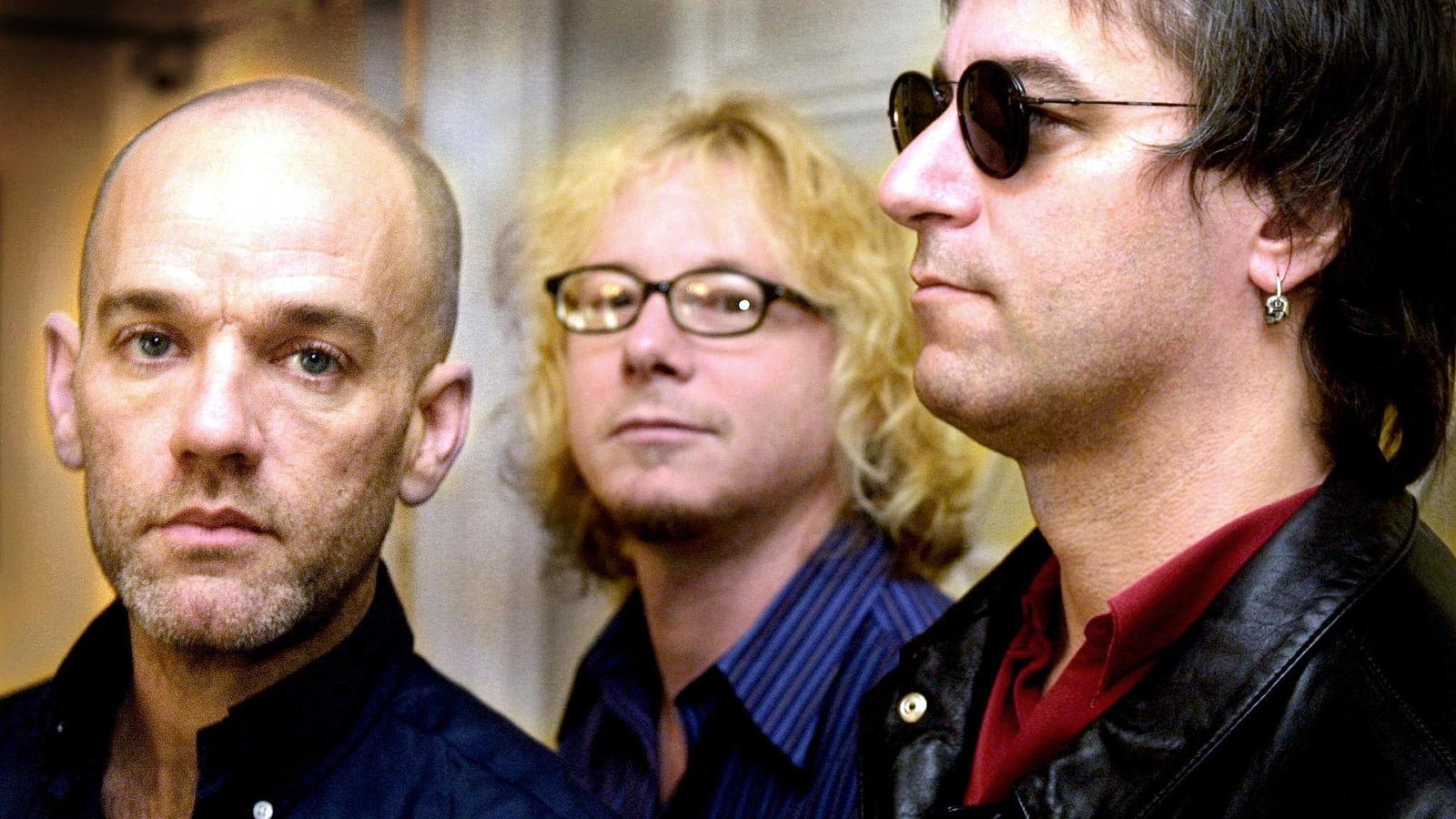
When college radio went mainstream—and 20 bands that came with it
In the early 1980s, a new generation of radio programmers took over the airwaves at college radio stations around the United States, introducing their fellow students to underground rock, British and European imports, regional punk scenes, and a different kind of hip-hop than you’d hear on commercial stations. A few years later, some of those bands started showing up on MTV and breaking into Billboard’s albums and singles charts. Here are some of the college-radio bands that made major moves into the mainstream in the late 1980s and early ’90s.
The Sugarcubes
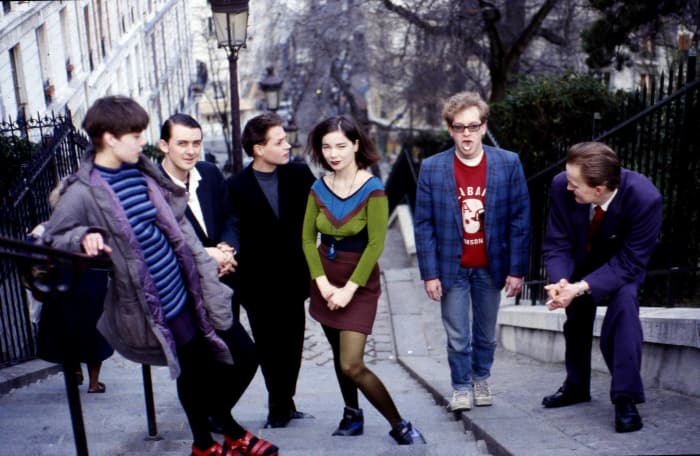
Before her groundbreaking experimental-art-pop solo career, Björk served an apprenticeship in Iceland’s underground rock scene that culminated with the Sugarcubes. The band offered a wry, quirky Northern European update of early MTV-era synth pop. You can hear Björk working out her later style on "Life’s Too Good, Here Today, Tomorrow Next Week!", and "Stick Around for Joy," but the Sugarcubes were a true ensemble—co-vocalist Einar Örn Benediktsson and the other members of the band all contributed to the Sugarcubes’ absurdist sensibility, off-kilter rhythms, and unexpected directions.
Nirvana

Nirvana’s emergence from the Seattle underground in 1992 marked the beginning of the end of the college-rock revolution. Major labels went on a signing spree, searching for the next big thing and MTV, rock radio, and the Lollapalooza tour certified the Alternative Nation as a cultural and commercial force. But most of the independent bands that followed Nirvana to big labels either broke up or failed to break through; others were cynical strivers in flannel shirts and oversized sweaters. Still, “Smells Like Teen Spirit” set off a revolution of its own and deserves a hallowed place in the rock pantheon.
U2

U2’s arena-sized aspirations were evident almost from the beginning—in retrospect, “I Will Follow — ” from 1980's "Boy" — sounds less like an ersatz Joy Division song than a rough draft of U2’s defining single, “Pride (In the Name of Love).” But the band’s first three albums—socially aware, politically charged, and earnestly righteous—found a foothold on college radio in the U.S. before "The Unforgettable Fire" and "The Joshua Tree" catapulted them into stratospheric superstardom.
R.E.M.

The first half of the quintessential college rock band’s career was a series of breakthroughs—from Southern campus favorites (debut single “Radio Free Europe”) to major critical darlings to platinum-selling alternative act to worldwide critical and commercial juggernaut. "Automatic for the People"’s somber mood, elegant arrangements, and reflective songwriting were the culmination of the band’s fertile first decade; the fact that it sold 18 million copies made it a cultural milestone.
The B-52's

This inventive and lovable New Wave/dance-pop act from Athens, Ga., defies the moody, earnest stereotypes of college rock—the B-52’s are fun-loving post-modern purveyors of irresistibly funky and archly self-aware art-pop. They’re also survivors—the first stage of the B-52’s’ career was interrupted, in 1985, by the death of guitarist Ricky Wilson. The comeback singles “Love Shack” and “Roam” marked the B-52’s’ biggest successes — in 1989 and ’90, respectively — but they’re still active, performing and making appearances as goodwill ambassadors on television.
The Replacements
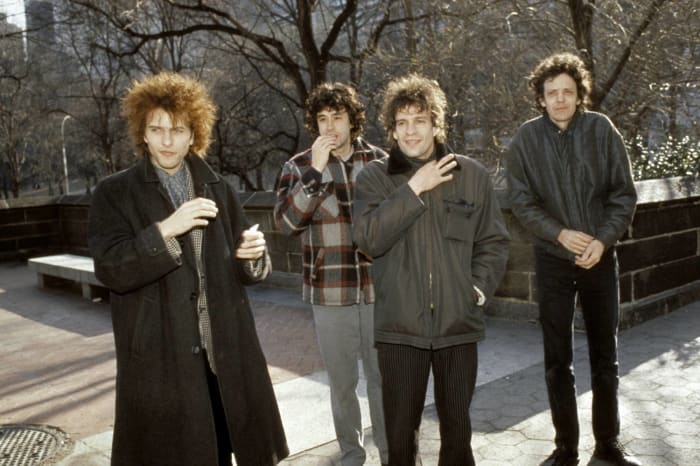
The ’Mats remain one of the definitive bands of the college-rock era. (They even paid tribute to college radio with “Left of the Dial.") Their catalog is unimpeachable, from adolescent punk anthems like “Dope Smokin’ Moron” to the woebegone reflections that appear with increasing frequency on "Let It Be," "Tim," and "Pleased to Meet Me." The band’s creative ambition and professional anxiety also set the stage for reluctant superstars of the early 1990s like Kurt Cobain.
Hüsker Dü

This Minneapolis trio emerged in the early 1980s with a neck-snapping brand of hardcore punk, performed at light speed. When Hüsker Dü eased the throttle—just slightly—on 1984’s double LP "Zen Arcade," you could hear the first traces of the emotionally loaded pop sensibilities and advanced songcraft that would mark the classic albums to come: "New Day Rising," "Flip Your Wig," and "Candy Apple Grey."
10,000 Maniacs

This long-running (and still active) band from Jamestown, N.Y., exemplified the intimate-yet-ebulliant coffee-shop folk-rock vibe of mid-’80s college radio. Jangly guitars, intricate melodies, and socially conscious lyrics—and Natalie Merchant’s earnest vocals—defined the band’s sustained run of success from 1985’s "The Wishing Chair" through 1992’s "Our Time in Eden," which contained the band’s defining song, the plaintive No. 1 rock single “These Are Days.”
The Pixies

The Pixies’ first run lasted barely seven years before falling apart in one of the most publicly acrimonious breakups in alt-rock history. But the four classic albums released by the beloved and bedeviled Boston band between 1988 and 1991 ("Surfer Rosa," "Doolittle," "Bossanova," and "Trompe le Monde") established the template for a couple of generations of American indie rock—big hooks, soft verse/loud chorus song structure, off-kilter guitar solos, and obscure lyrics and song topics.
Jane's Addiction

"Nothing Shocking," the 1988 debut from these ambitious Los Angeles hedonists, introduced adventurous frontman Perry Farrell’s visionary punk nihilism and Dave Navarro’s psychedelic alt-funk guitar riffs. The 1990 follow-up, "Ritual de lo habitual," with the incendiary “Stop” and the inimitable hit single “Been Caught Stealing,” went double platinum and confirmed Jane’s Addiction as one of the most original bands of the era. Drugs and personality clashes took their toll—the band broke up immediately after Ritual, and a handful on-and-off-again reunions (and a bunch of more or less forgettable other projects) have only reinforced the significance of JA’s signature achievements.
De La Soul

Hip-hop developed its own alternative universe in the late 1980s, headed by the New York hippie-rap trio De La Soul and their groundbreaking debut album of psychedelic sample collage, "3 Feet High and Rising." De La Soul’s relentlessly positive message and bright, colorful music echoed an earlier age of hip-hop but was also a direct response to the rise of gangsta rap.
L7
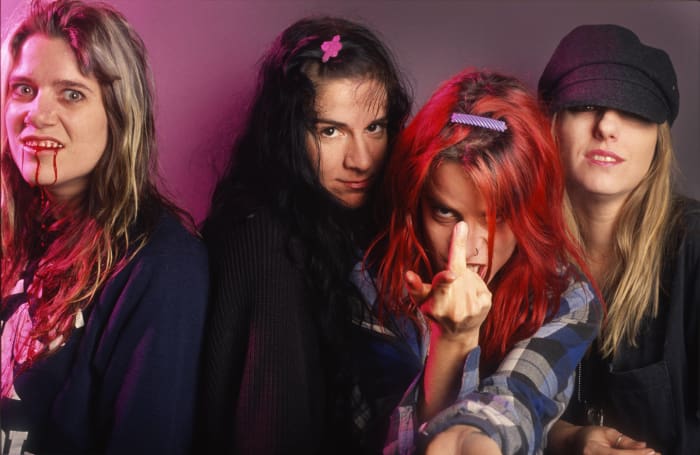
Big-league production from Butch Vig and the hit single “Pretend We’re Dead” propelled L7’s third album, "Bricks Are Heavy," into MTV and radio rotation in 1992. The provocative Los Angeles punk-metal band’s politically charged sound and fist-pumping feminist ethos never reached the top of the charts, but they remained a critical favorite through the rest of the decade, releasing three more cult classic albums and crafting a distinctive sound that mixed the Runaways, Sonic Youth, and Mudhoney.
Fugazi

Ian MacKaye, a veteran of the Washington, D.C., hardcore punk scene, formed Fugazi after the dissolution of the legendary band Minor Threat. The band’s uncompromising independent business model, challenging experimental punk style, and restless creativity seemed like certain roadblocks to sustained success. With devoted fans and a rigorous touring schedule, though, Fugazi remained active for almost 20 years and cultivated a reputation as both a great band and decent people.
The Smiths

This Manchester band defined British alternative rock in the mid-1980s—enigmatic, nostalgic, self-aware, and cantankerous, they released four albums of ironic and increasingly sophisticated guitar pop between 1984 and ’87 before internal tensions and politicking led to an almost inevitable breakup. The Smiths’ wry and literate (and quintessentially English) pop was an indelible influence on the next generation of Britpop, including Oasis, Blur, and especially Pulp.
The Cure

The Cure streamlined the gloomy baroque pageantry of Goth rock, refining the movement’s lush decadence for the MTV generation on the propulsive “The Hanging Garden,” from the masterful "Pornography." Then Robert Smith revealed a poppier, peppier side on the breakthrough 1987 album "Kiss Me Kiss Me Kiss Me" and its sequence of delightful upbeat hits: “Just Like Heaven,” “Why Can’t I Be You?,” and “Hot! Hot! Hot!!!”
The Cult

Retro rock isn’t a recent invention. Singer Ian Astbury and guitarist Billy Duffy of the Cult were exhuming classic '60s and '70s hard rock and psychedelia as early as 1984. By 1989, with producer Bob Rock on board for Sonic Temple, the Cult had perfected the formula for their particular boogie rock/metal/punk hybrid, as exemplified by the still-invigorating hit single “Fire Woman.”
Psychedelic Furs

John Hughes presided over a significant segment of the alternative-to-mainstream crossover market of the 1980s—his canon of teen dramas and comedies allowed Simple Minds, Oingo Boingo, Yello, and the Dream Academy to reach the American suburbs. The Psychedelic Furs were evolving from funk-punk to soaring synth-pop when they re-recorded “Pretty in Pink” for Hughes’ 1986 movie of the same title. (The "Pretty in Pink" soundtrack also included Orchestral Manoeuvres in the Dark’s “If You Leave”—a pretty stunning one-two punch of ’80s pop.)
Dinosaur Jr.

“Freak Scene,” from 1987’s "You’re Living All Over Me," was the best and worst thing to happen to Dinosaur Jr. Three and a half minutes of glorious, fuzz-enshrouded hooks established the Massachusetts trio as the future of independent American rock. But that classic single (and the album "Bug") also led to Dinosaur Jr’s ultimately unsatisfying deal with Sire Records and the departure of two-thirds of the original lineup—setting the blueprint for the business and creative conflicts that would beset countless bands jumping from indie labels to the majors in the late '80s and early '90s.
Sinéad O'Connor
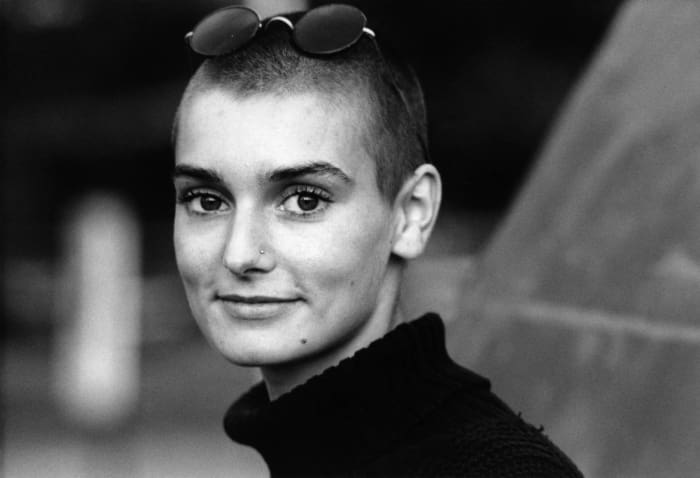
Sinéad O’Connor’s meteoric rise to success—TV appearances, hit singles, and a Grammy win all before she was 25—was accompanied by an equally abrupt downfall. After ripping up a photo of Pope John Paul II on "Saturday Night Live" in 1992, she found her promising career derailed and has never returned to prominence. In the consistently unpredictable recordings that have followed, O’Connor has failed to match the emotional weight of her early singles “Mandinka,” “The Emperor’s New Clothes,” and the arresting “Nothing Compares 2 U.”
Sonic Youth

The New York avant-garde noise/art-rock outfit was among the most unlikely beneficiaries of alternative rock’s crossover into the mainstream in the late ’80s and early ’90s. Sonic Youth emerged from the downtown gallery scene inhabited by Swans, Teenage Jesus and the Jerks, and Jean-Michel Basquiat. In the wake of 1988’s monumental "Daydream Nation," though, SY found themselves headlining Lollapalooza, collaborating with Public Enemy’s Chuck D, and even appearing on an episode of "The Simpsons."
The Lemonheads
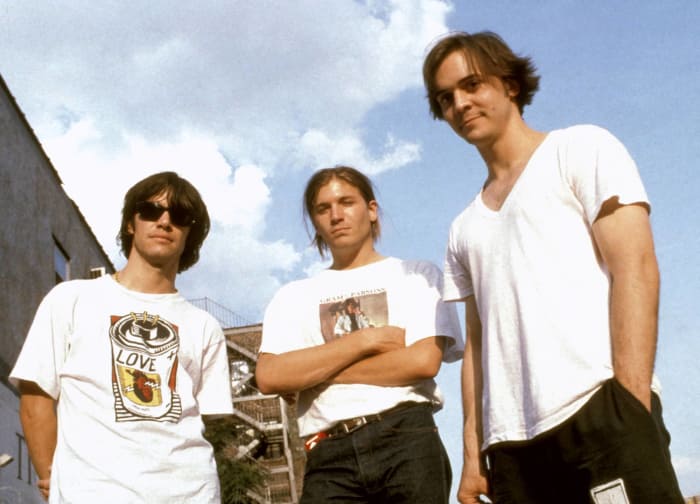
It’s easy to dismiss the Lemonheads—they’re a textbook example of a band trading its underground credibility for major-label success with cynical radio-friendly jingles like “It’s a Shame About Ray,” “Into Your Arms,” and a cover of “Mrs. Robinson.” (Besides, Evan Dando’s runway-level good looks made him an inviting target for backlash from male fans.) Much of the band’s catalog is forgettable, but the mix of folk, punk, and metal on the Lemonheads’ ’80s albums suggest they had more in common with Dinosaur, Jr., and the embryonic Seattle than they’re commonly given credit for.
More must-reads:
Trending in Entertainment
Customize Your Newsletter
 +
+
Get the latest news and rumors, customized to your favorite sports and teams. Emailed daily. Always free!
Use of this website (including any and all parts and
components) constitutes your acceptance of these
Terms of Service and Privacy Policy.

